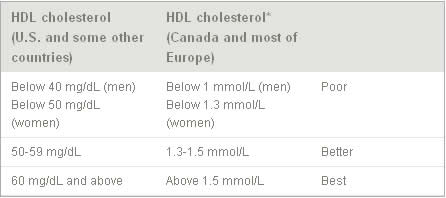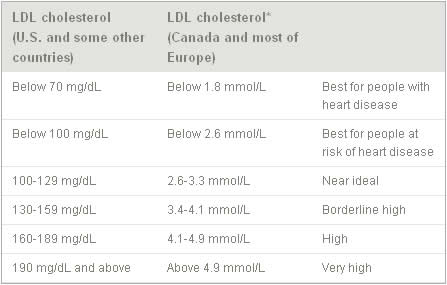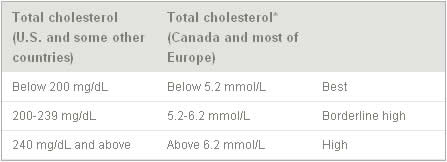Good Levels of HDL, LDL, Triglycerides, and Total Cholesterol
Since there is no any clearly symptom or specific sign of high cholesterol, the only one to get to know whether the levels of your LDL, HDL, triglycerides and total cholesterol are good (normal) or bad (borderline high or too high) is by taking a blood test. And in general, there are two major types of this test; the blood test for cholesterol with fasting and without fasting.
Your doctor may recommend first to take non-fasting test for cholesterol, and then if necessary she /he may also recommend taking the test after you take fasting.
It should be done regularly to keep monitoring the fluctuation of your cholesterol levels. Generally, you can start it once you reach the age of 20. Then repeat it after the next 5 years (do it at least once in 5 years).
However if you have lots of risk factors of heart disease or other cardiovascular diseases, your doctor may ask you to take the test for cholesterol more often.
A lipid profile test (a medical term used to call a fasting cholesterol test) will show more detailed information. While non-fasting cholesterol test only provide the result of your HDL and total cholesterol, a lipid profile test is also commonly used to your LDL and even for your triglyceride level.
As the name suggests, if your doctor asks you to take a non-fasting cholesterol test, you don’t need to take a fasting before the test. On the other hand, for lipid profile test, you have to fast before taking the test.
The fasting is purposed to allow your blood gets close to its real property – not influenced by dietary fat and sugar you get from foods that you eat, so thus the test will get more accurate result.
How long should you fast for cholesterol test?
According to the Friedewald equation, the level of your triglyceride can affect the calculation of your LDL. And since the levels of triglyceride can significantly arise after eating, you need to fast before the test in order to measure your LDL accurately.
But how long you should do your fasting? In general, it’s recommended to take about 12 hours of fasting before your lipid profile test – according to an article published on the official site of Harvard Medical School.
What else you need to do before taking the test?
Generally, fasting and not-fasting (depending on which one of cholesterol test you want to take) are the major issue you need to concern. But the following checklists also should be not ignored:
- Control your stress. Both psychological and physical stress may affect the levels of your HDL and total cholesterol.
- Keep far away from any infection.
- Don’t drink any alcohol for about 24 hours before your lipid profile test, because alcohol can surge your triglyceride levels.
- Ask a doctor for more advice!
The results of the test will provide you some forms of numbers. In general, the interpretation of these numbers may be slightly different from country to country because each country can have its own guideline.
The following tables can help on how to interpret these numbers based on the U.S guidelines:
For HDL

For total cholesterol
For triglycerides

The table above tells us that triglycerides lower than 150 mg /dL or 1.7 mmol /L is the safe level. But for the best result in optimally improving the health of our heart and blood flow, triglycerides lower than 1.3 mmol /L or 100 mg/ dL is much better – it is considered optimal level, according to the recommendation by AHA (the American Heart Association).
However for healthy individuals, they should not use any medical intervention to improve their cholesterol triglycerides unless if they get the recommendation from doctor.
Instead, healthy lifestyle approaches such as healthy diet, regular exercise, and losing weight for those with overweight are much more recommended to keep the level of triglyceride on its healthiest level.
See also how losing weight can help lower cholesterol in people with obesity on this section!
And for LDL, the interpretation of its good levels can vary!
As well we know, LDL ‘much more familiar called as bad cholesterol’ is a major risk factor for many health problems associated with cardiovascular disease such as heart disease and heart attack.
In general, LDL is often the major subject of the goal of lowering cholesterol treatment.
And the target of lowering LDL can vary from person to person, depending on certain medical conditions that you are having or the underlying risk of heart disease that you have.

People at risk of heart disease are a group of people who have some or many risk factors of heart disease. These risk factors include:




